In the competitive world of compact SUVs, the Ford Puma and VW T-Cross emerge as two well-rounded contenders that offer a blend of style, performance, and practicality. As they field for your attention in 2024, let’s delve deeper into their technical aspects and innovations to see how they stack up against one another.
Ford Puma vs VW T-Cross – Which model is better for everyday use?
Everyday use, family trips or long-distance drives – here’s where the differences show.
Discover whether Ford Puma or VW T-Cross fits your lifestyle better.
Powertrain and Performance
Starting with the Ford Puma, this model comes equipped with a range of petrol hybrid engines, offering outputs from 125 to 160 HP. The power delivery is smooth, and the Puma confidently accelerates from 0 to 100 km/h in as little as 7.4 seconds for the more powerful variants. With a front-wheel drive layout, drivers can choose between a manual gearbox or a DCT automatic transmission, providing both engagement and convenience.
On the other hand, the VW T-Cross presents a more traditional lineup of petrol engines, with power outputs ranging from 95 to 150 HP. The acceleration times peak at 8.4 seconds for the sportier variants, showcasing commendable performance for a compact SUV. Like the Puma, the T-Cross offers both manual and automatic transmission options, but it notably includes a larger engine capacity of up to 1498 cc in some models.
Fuel Efficiency and Emissions
When evaluating fuel efficiency, the Ford Puma impresses with consumption figures ranging from 5.4 to 6 L/100 km, while CO2 emissions hover around 121 to 136 g/km. This efficiency is partly attributed to its innovative mild-hybrid technology, which enhances fuel economy without sacrificing performance.
The VW T-Cross, while slightly less efficient, boasts competitive figures of 5.6 to 6 L/100 km and CO2 emissions from 127 to 135 g/km. Though it lacks hybrid technology, the T-Cross employs lightweight design elements and effective engine optimization to maintain decent fuel economy.
Dimensions and Interior Space
In terms of dimensions, the Ford Puma spans between 4186 and 4226 mm in length, 1805 mm in width, and 1550 mm in height, providing ample space for passengers and cargo. The trunk capacity is commendably 456 L, allowing for practical day-to-day usability.
The VW T-Cross is compact at 4127 mm long and 1784 mm wide, but it offers a generous trunk capacity of 455 L as well. Despite its slightly smaller footprint, the T-Cross provides a well-designed interior with ample headroom thanks to its height of 1573 mm, ensuring comfort for all five occupants.
Safety and Technology Features
Modern safety features are paramount in today’s vehicles, and both the Ford Puma and VW T-Cross deliver in this category. The Puma is equipped with Ford’s latest Co-Pilot360 suite, which includes advanced driver assistance features such as adaptive cruise control, lane-keeping assistance, and automated emergency braking. Its robust safety ratings make it a reliable family car.
The T-Cross, a model known for its safety, includes VW’s IQ.DRIVE technology, enhancing safety with features like travel assist, lane assist, and adaptive cruise control. It boasts a suite of airbags and solid crash-test performances, increasing its appeal to safety-conscious buyers.
Conclusion: Which One Should You Choose?
Choosing between the Ford Puma and the VW T-Cross ultimately boils down to personal preference. The Puma excels with its refreshing hybrid technology and sporty driving dynamics, making it an extremely attractive option for those seeking performance and efficiency combined.
Conversely, the T-Cross boosts its offering with traditional petrol engines and a slightly more spacious interior, which can appeal to families looking for reliability and spacious comfort. Both vehicles are deserving picks in the competitive compact SUV segment, and it comes down to whether you want the modern flair of hybrid technology or the established charm of VW craftsmanship.
Here’s where it gets real: The technical differences in detail
Costs and Efficiency:
Price and efficiency are key factors when choosing a car – and this is often where the real differences emerge.
VW T-Cross has a to a small extent advantage in terms of price – it starts at 21100 £, while the Ford Puma costs 24800 £. That’s a price difference of around 3694 £.
Both cars consume an average of 5.40 L per 100 km – no difference here.
Engine and Performance:
Power, torque and acceleration say a lot about how a car feels on the road. This is where you see which model delivers more driving dynamics.
When it comes to engine power, the Ford Puma has a somewhat edge – offering 168 HP compared to 150 HP. That’s roughly 18 HP more horsepower.
In acceleration from 0 to 100 km/h, the Ford Puma is somewhat quicker – completing the sprint in 7.40 s, while the VW T-Cross takes 8.40 s. That’s about 1 s faster.
In terms of top speed, the Ford Puma performs barely noticeable better – reaching 210 km/h, while the VW T-Cross tops out at 200 km/h. The difference is around 10 km/h.
There’s also a difference in torque: Ford Puma pulls a bit stronger with 290 Nm compared to 250 Nm. That’s about 40 Nm difference.
Space and Everyday Use:
Cabin size, boot volume and payload all play a role in everyday practicality. Here, comfort and flexibility make the difference.
Both vehicles offer seating for 5 people.
In curb weight, VW T-Cross is slight lighter – 1267 kg compared to 1316 kg. The difference is around 49 kg.
In terms of boot space, the Ford Puma offers slightly more room – 523 L compared to 455 L. That’s a difference of about 68 L.
In maximum load capacity, the Ford Puma performs hardly perceptible better – up to 1283 L, which is about 2 L more than the VW T-Cross.
When it comes to payload, VW T-Cross hardly perceptible takes the win – 480 kg compared to 469 kg. That’s a difference of about 11 kg.
Who wins the race?
The VW T-Cross proves to be edges out slightly and therefore becomes our DriveDuel Champion!
VW T-Cross is the better all-rounder in this comparison.
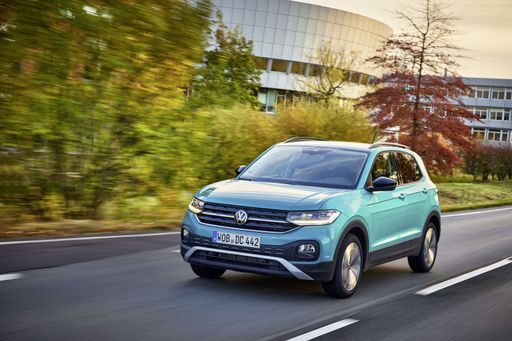 @ Volkswagen AG / VW Media
@ Volkswagen AG / VW Media
VW T-Cross
Ford Puma
The Ford Puma presents itself as a stylish compact SUV with a distinctive design that combines practicality with a dynamic driving experience. Its sleek lines and sporty aesthetics make it stand out on the road, while the interior offers a comfortable and tech-savvy environment. With an emphasis on efficiency and a smooth drive, the Ford Puma is well-suited for both urban commutes and countryside adventures.
details @ Ford Motor Company / Ford Media Center
@ Ford Motor Company / Ford Media Center
 @ Ford Motor Company / Ford Media Center
@ Ford Motor Company / Ford Media Center
 @ Ford Motor Company / Ford Media Center
@ Ford Motor Company / Ford Media Center
 @ Ford Motor Company / Ford Media Center
@ Ford Motor Company / Ford Media Center
VW T-Cross
The VW T-Cross turns everyday practicality into a style statement, offering a roomy-feeling cabin, clever storage and playful design that suits town life and family duties alike. On the road it's composed and relaxed, rewarding buyers who want the raised seating and confident presence of an SUV without the weighty compromises.
details @ Volkswagen AG / VW Media
@ Volkswagen AG / VW Media
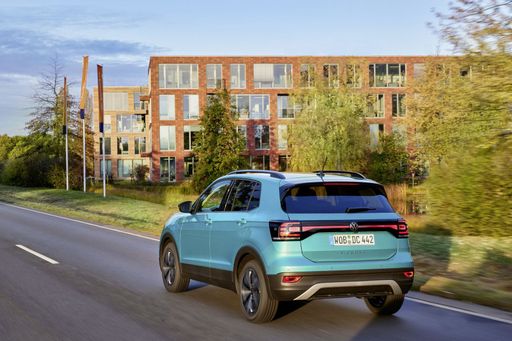 @ Volkswagen AG / VW Media
@ Volkswagen AG / VW Media
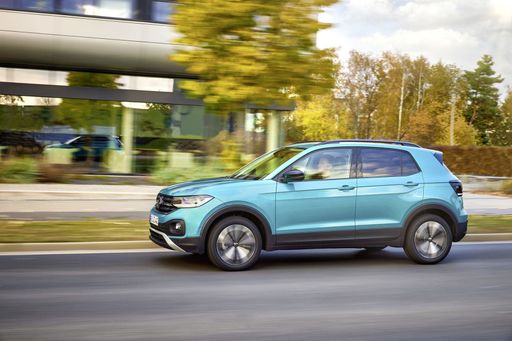 @ Volkswagen AG / VW Media
@ Volkswagen AG / VW Media
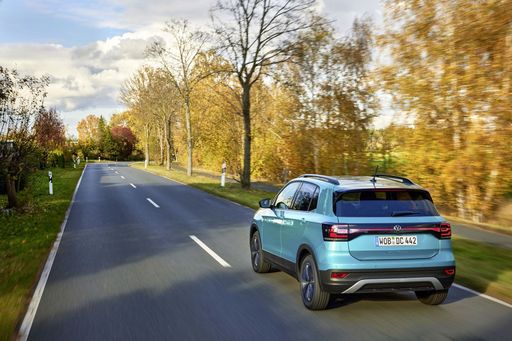 @ Volkswagen AG / VW Media
@ Volkswagen AG / VW Media
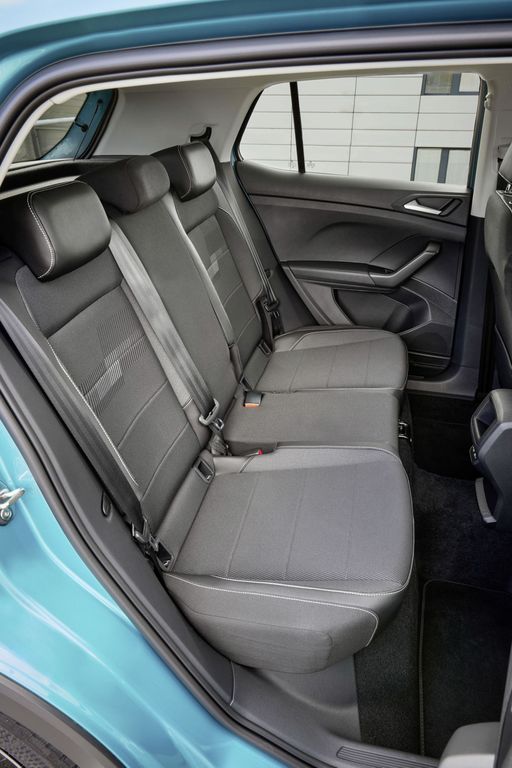 @ Volkswagen AG / VW Media
@ Volkswagen AG / VW Media
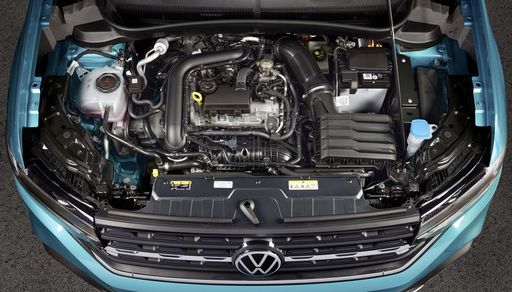 @ Volkswagen AG / VW Media
@ Volkswagen AG / VW Media
 @ Ford Motor Company / Ford Media Center
@ Ford Motor Company / Ford Media Center
|
 @ Volkswagen AG / VW Media
@ Volkswagen AG / VW Media
|
|
|
|
Costs and Consumption |
|
|---|---|
|
Price
24800 - 36300 £
|
Price
21100 - 31500 £
|
|
Consumption L/100km
5.4 - 5.9 L
|
Consumption L/100km
5.4 - 6 L
|
|
Consumption kWh/100km
13.1 - 13.9 kWh
|
Consumption kWh/100km
-
|
|
Electric Range
361 - 376 km
|
Electric Range
-
|
|
Battery Capacity
43 kWh
|
Battery Capacity
-
|
|
co2
0 - 135 g/km
|
co2
124 - 136 g/km
|
|
Fuel tank capacity
42 L
|
Fuel tank capacity
40 L
|
Dimensions and Body |
|
|---|---|
|
Body Type
SUV
|
Body Type
SUV
|
|
Seats
5
|
Seats
5
|
|
Doors
5
|
Doors
5
|
|
Curb weight
1316 - 1563 kg
|
Curb weight
1267 - 1338 kg
|
|
Trunk capacity
456 - 523 L
|
Trunk capacity
455 L
|
|
Length
4186 - 4226 mm
|
Length
4127 mm
|
|
Width
1805 mm
|
Width
1784 mm
|
|
Height
1550 - 1555 mm
|
Height
1573 mm
|
|
Max trunk capacity
1216 - 1283 L
|
Max trunk capacity
1281 L
|
|
Payload
367 - 469 kg
|
Payload
463 - 480 kg
|
Engine and Performance |
|
|---|---|
|
Engine Type
Electric, Petrol MHEV
|
Engine Type
Petrol
|
|
Transmission
Automatic, Manuel
|
Transmission
Manuel, Automatic
|
|
Transmission Detail
Reduction Gearbox, Manual Gearbox, Dual-Clutch Automatic
|
Transmission Detail
Manual Gearbox, Dual-Clutch Automatic
|
|
Drive Type
Front-Wheel Drive
|
Drive Type
Front-Wheel Drive
|
|
Power HP
125 - 168 HP
|
Power HP
95 - 150 HP
|
|
Acceleration 0-100km/h
7.4 - 9.8 s
|
Acceleration 0-100km/h
8.4 - 11.3 s
|
|
Max Speed
160 - 210 km/h
|
Max Speed
180 - 200 km/h
|
|
Torque
170 - 290 Nm
|
Torque
175 - 250 Nm
|
|
Number of Cylinders
3
|
Number of Cylinders
3 - 4
|
|
Power kW
92 - 124 kW
|
Power kW
70 - 110 kW
|
|
Engine capacity
999 cm3
|
Engine capacity
999 - 1498 cm3
|
General |
|
|---|---|
|
Model Year
2025
|
Model Year
2024 - 2025
|
|
CO2 Efficiency Class
A, D
|
CO2 Efficiency Class
D, E
|
|
Brand
Ford
|
Brand
VW
|
Is the Ford Puma offered with different drivetrains?
The Ford Puma is offered with Front-Wheel Drive.
The prices and data displayed are estimates based on German list prices and may vary by country. This information is not legally binding.
